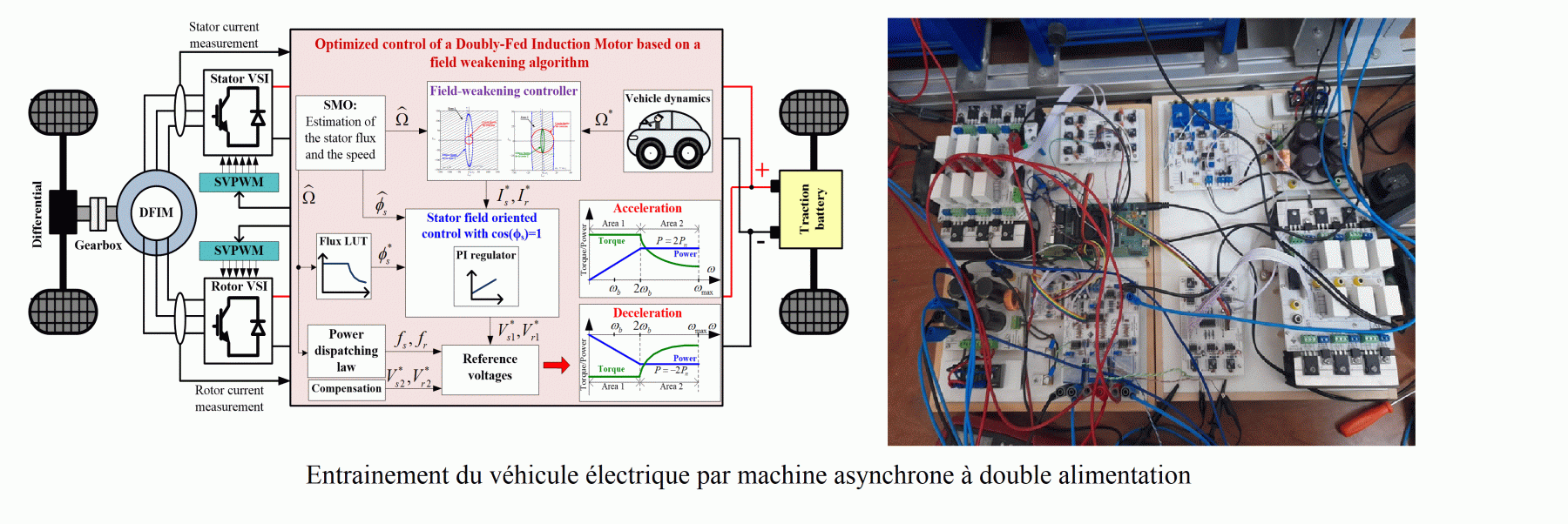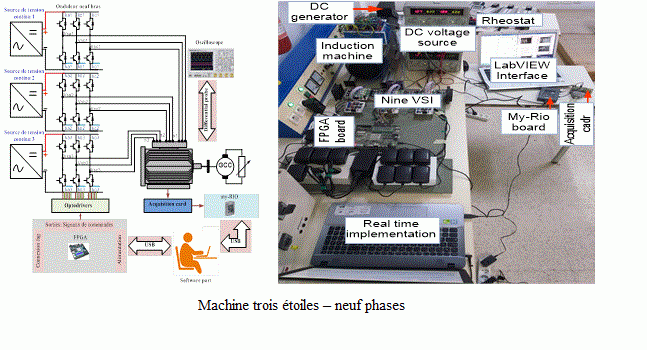
Hélali Hiba
Research center: Renewable Energy and Smart Grid (RESG)
Establishment: ENISo
Grade: post-Doc
| References | Publication | Link | |
|---|---|---|---|
| H. Hélali, A. Khedher, 2024, Electrical Engineering Vol : 106, Issue : 5, PP : 5355 - 5372, DOI : 10.1007/s00202-024-02264-4, IF : 1,6, Q2, Springer Science and Business Media Deutschland GmbH, | October 2024 | Link | |
| H. Hélali, A. Khedher, 2023, Computers and Electrical Engineering Vol : 110, Issue : 00457906, PP : 108864, DOI : https://doi.org/10.1016/j.compeleceng.2023.108864, IF : 4.3, Q1, Science Direct, | September 2023 | Link | |
| H. Hélali, A. Khedher, 2022, Computers & Electrical Engineering Vol : 101, PP : 108050, DOI : https://doi.org/10.1016/j.compeleceng.2022.108050, IF : 4.152, Q1, WOS, | 10 may 2022 | Link | |
| H. Hélali, A. Khedher, 2021, Electrical Engineering Vol : 104, Issue : 2, PP : 929-944, DOI : https://doi.org/10.1007/s00202-021-01351-0, IF : 0.51, Q2, WOS, | 10 july 2021 | Link |
| Searcher | Direction | Title | Country City | Presentation Date | Summary | Type | |
|---|---|---|---|---|---|---|---|
| Hélali Hiba | A. Khedher, | 3 décembre 2022 | Review | Sans co-encadrement |
| Searcher | Direction | Title | Country City | Presentation Date | Summary | Type |
|---|
| Projects | translate.Pôle de Recherche | |
|---|---|---|
| Systèmes de Transport Intelligents (ITS) | ||
| Énergies Renouvelables et Réseaux électriques intelligents (RESG) | ||
| Systèmes de Transport Intelligents (ITS) | ||
| Systèmes de Transport Intelligents (ITS) | ||
| Systèmes de Transport Intelligents (ITS) | ||
| Énergies Renouvelables et Réseaux électriques intelligents (RESG) | ||
| Énergies Renouvelables et Réseaux électriques intelligents (RESG) | ||
| Systèmes de Transport Intelligents (ITS) | ||
| Énergies Renouvelables et Réseaux électriques intelligents (RESG) | ||
| Énergies Renouvelables et Réseaux électriques intelligents (RESG) | ||
| Énergies Renouvelables et Réseaux électriques intelligents (RESG) | ||
| Énergies Renouvelables et Réseaux électriques intelligents (RESG) |
| Cover page | Authors | Title | Link | ISBN | Publication date | Editions | Year |
|---|
Project : ITS1 EMC and reliability of automotive converters based on large-gap components (GaN and SiC)
The power density of converters is continually increasing to meet growing needs in terms of power integration. This is made possible by the development of new wide-bandgap power component technologies such as silicon carbide (SiC) and gallium nitride (GaN). It is therefore essential to study the impact of these new-generation GaN and SiC components on the EMC and reliability of the power converters used in these applications.
This project is being developed in collaboration with Prof. Moncef Kadi's team in charge of the Electronics and Systems Department at IRSEEM, Rouen-France.
Leader:J. Ben Hadj Slama,
Members:Eloued Sonia,Mohamed Belghith, Ahmed Taleb Cheikhna
The aim of this project is to improve the quality of injection of renewable electrical energy into the power grid. We have developed high-efficiency single-phase and three-phase converter structures, while reducing the electromagnetic disturbances generated by the converter, as well as leakage current. We have designed and built a three-phase current inverter that is more reliable than a voltage inverter, and can be connected to the grid at low DC bus voltages. So, in order to improve the efficiency of this PV converter, we studied the impact of using SiC components on converter losses. For this purpose, we adopted the double pulse test technique and PLECS software to evaluate the converter's efficiency.
This work was carried out in collaboration with Professor Kamal Al-Hadda Canada Research Chair in Energy Conversion and Power Electronics, ETS de Montreal, Canada.
Leader: Hamouda Mahmoud
Team: Ben Hadj Slama Jaleleddine, Boudhir Kraiem Sana, K. Ezzeddine
In this project, we are working on the automatic optimization of the typon layout in order to reduce conducted and radiated electromagnetic disturbances in the converter. An automatic coupling has been implemented between Simplorer software for fine electrical simulation, Ansys' Q3D software for calculating the electromagnetic coupling matrix between the various parts of the circuit, and Matlab for automatic layout generation and genetic algorithm optimization. The proposed methodology has been validated experimentally.
This project is being developed in collaboration with Prof. Christian Vollaire's team in charge of the electromagnetic compatibility (EMC) activity at the Ampère laboratory at the Ecole Cenrale de Lyon-France
responsible: J. Ben Hadj Slama,
Members: Hajji Omessaad, Belloumi Wided
Estimating the state of charge (SoC) of batteries in electric vehicles is essential to ensure safe and efficient operation. In this project, we are working on the development of state observer-based algorithms: Extended Kalman Filter (EKF) and Smoot Variable Struture Filter (SVSF). We have proposed a fuzzy logic technique for estimating battery parameters, taking into account the state of charge and ambient temperature. To achieve this, we have used a rich database collected from various battery charge and discharge tests under different ambient temperature conditions.
This project is developed in collaboration with Mr. Bilal Manai Professor at Cégep de l'Outaouais, Canada.
Team leader: Jemmali Sabeur
Team: Hamouda Mahmoud, M. ben Lazreg,
In this project, we calculated reachability between different points along the vehicle's path, using an accessibility analysis scheme as a reliable risk indicator. To do this, we used interval analysis to propagate the uncertainties influencing vehicle dynamics. This boils down to solving an ordinary differential equation with uncertain variables and parameters via an interval Taylor series expansion method. Depending on the bounds obtained for the achievable sets, a decision is made regarding navigation safety.
Once a risk of collision is detected, the risk management layer acts to update the control parameters to influence the location of the most likely reachable space, control the critical situation and guarantee good reachability, while avoiding any risk of the vehicle colliding with the forbidden zone. Several simulation results demonstrate the safety, efficiency and robustness of the proposed global navigation under uncertainty.
This project is being developed in collaboration with Professor Lounis Adouan of the Heudiasyc laboratory, Université de Technologie de Compiègne, Compiègne, France.
Manager: Nasri Othman
Team: Ben Hadj Slama Jaleleddine, Ben Lakhal Nadhir Mansour
The aim of this project is to guarantee the permanent injection of renewable energy into the electrical grid, even when the latter presents disturbances such as voltage dips, harmonics and frequency variations.
We have developed techniques for fast, accurate extraction of fundamental components, unbalance and offset, even in the event of frequency jumps. This has been tested and validated under highly disturbed network voltage conditions. The results obtained in simulation and real-time emulation demonstrate the effectiveness of this approach in estimating, with high accuracy, the instantaneous parameters of the grid voltage without any steady-state ripple, and without the integration of adaptive filters.
This work is developed in collaboration with Professor Kamal Al-Haddad Canada Research Chair in Energy Conversion and Power Electronics, ETS de Montreal, QC, Canada.
Manager: Ben Hadj Slama Jaleleddine
Team: Hamouda Mahmoud, Mellouli Mohamed
The reliability of photovoltaic inverters is essential to guarantee continuity of service on the electricity grid. In this project, we are developing intelligent fault diagnosis methods for photovoltaic inverters, based on the analysis of the electromagnetic signature of these inverters, using advanced signal processing techniques. These methods will be extended in a second stage to prognosticate component ageing.
The proposed methodology was initially validated on a three-phase NPC inverter. The method was then adapted for application to other advanced structures, using various signal processing analyses. The proposed method is capable of detecting and isolating a single open switch fault in a five-level U-cell single-phase inverter (type PUC5).
Numerical and experimental validations have shown that the proposed method is robust to variations in load current and operating parameters.
With a view to using electromagnetic disturbances as a signature of power component ageing, we are implementing advanced signal processing techniques such as autocorrelation...
This work is developed in collaboration with Professor Kamal Al-Haddad Canada Research Chair in Energy Conversion and Power Electronics, ETS de Montreal, QC, Canada.
Manager: Ben Hadj Slama Jaleleddine
Team:Hamouda Mahmoud, Abari Ibtissem, Ahmed Taleb Cheikhna
In the first phase of this project, we opted for the integration of the double-fed asynchronous machine as the drive system. It should be noted that this type of motor is highly capable of operating at high speeds. On these machines, we are implementing non-linear and non-conventional control structures, essentially integrating control and observation of sliding-mode states of the system.
In a second step, we have introduced multi-stator asynchronous machines with the ability to segment the power developed by the drive systems. These machines, generally of high power, are used in marine propulsion and high-power systems. We have built a test bench for a three-star, nine-phase machine. The test bench consists essentially of the high-power part (nine-arm inverter) and its open-loop control. The closed-loop control is currently being finalized.

Vehicle drive by dual-powered asynchronous machine

Three-star machine - nine phases

